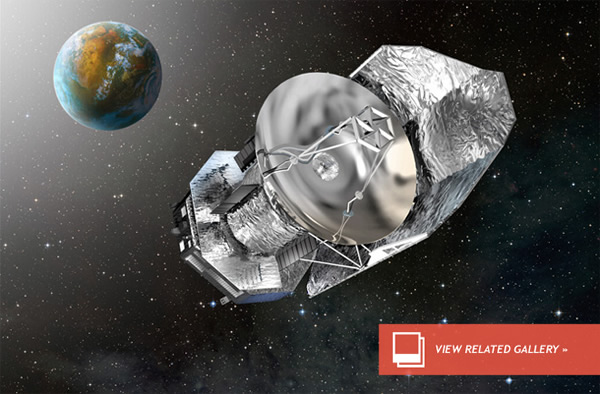Europe's Herschel Observatory Goes Blind, Dies
The European Space Agency’s Herschel space observatory has died.
The mission, a 1 billion Euro space telescope that has been observing the cosmos since 2009, has run out of coolant, forcing its optics offline. It has, in effect, gone blind.
Herschel observed near-infrared and sub-millimeter wavelengths, the kind of radiation that is abundant inside star-forming nebulae and baby galaxies. But in order to be sensitive to such extreme wavelengths, the 3-ton spacecraft needed to be cooled to near-absolute zero (-273 degrees Celsius or -459 F). The coolant, a supply of cryogenic helium, has now run dry and the mission is officially over.
This sad end to an amazing mission doesn’t come as a surprise to mission managers, however, who are now planning to send Herschel into a solar “graveyard” orbit. The telescope has sat in a gravitationally stable region 1.5 million kilometers away from the night side of our planet for the entirety of its mission. In March, Herschel’s engineers sent out an alert to astronomers using data from the mission that the space telescope would soon be forced offline.
The 3.5 meter space telescope was the most advanced of its kind, complementing observations by the other great space telescopes and making groundbreaking discoveries of the nature of our universe. Now that Hershel has died, other observatories will step in to observe in wavelengths it once covered.
Europe's Herschel Observatory Goes Blind, Dies
The ground-based ALMA array in Chile has just gone online and will be able to access the sub-millimeter wavelengths, whereas the 747-mounted SOFIA telescope will access the near-infrared. But regardless of the overlap, Herschel will be sorely missed by the astronomical community.(Apr 29, 2013 01:24 PM ET // by Ian O'Neill)












